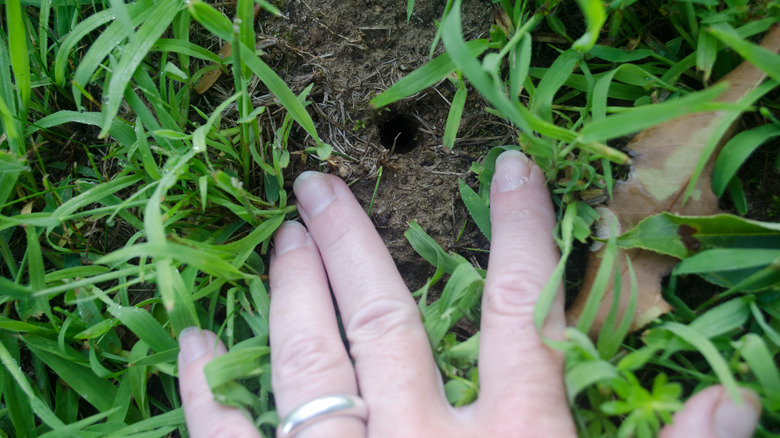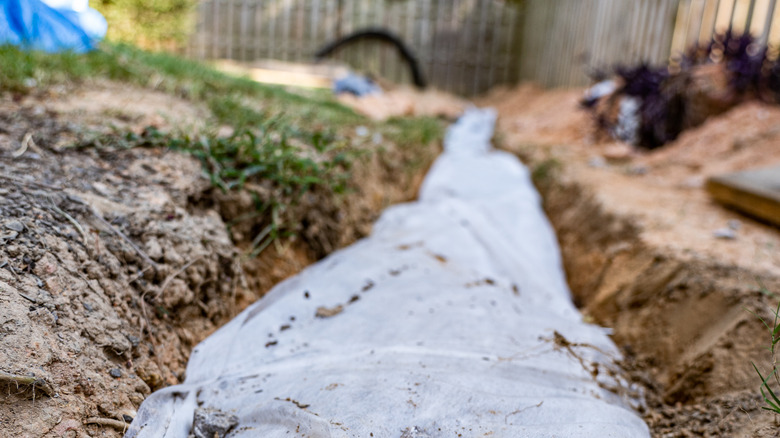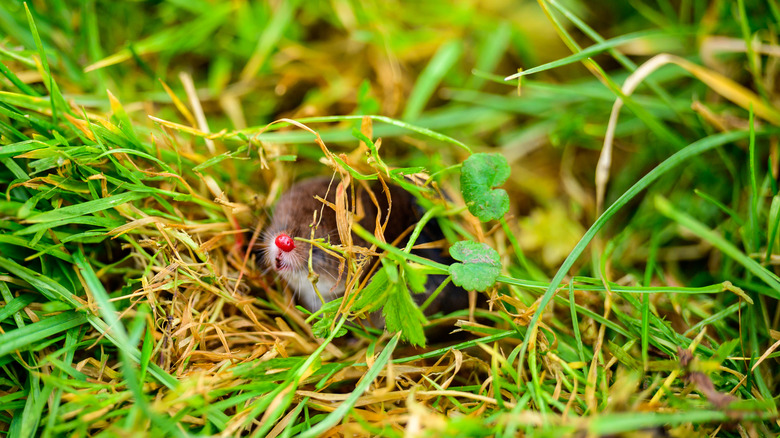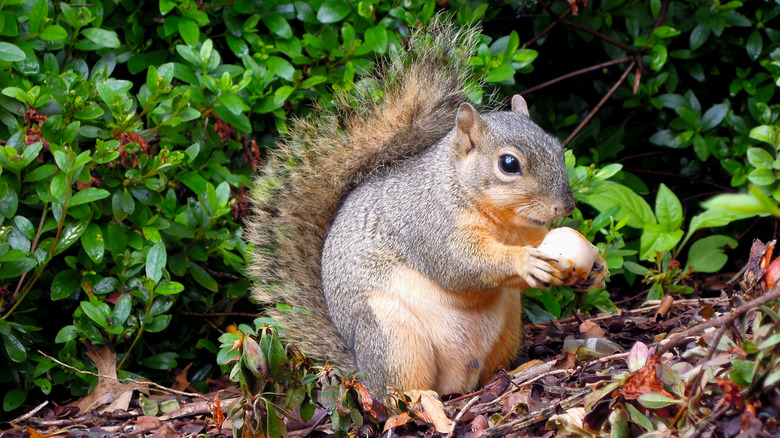What The Holes In Your Yard Really Mean
You're walking through your yard enjoying the fresh air when, without warning, your foot twists and you stumble. As you scour the ground for the cause of your clumsiness (you didn't just trip over your own feet this time), you see a hole in the ground. Looking around, it isn't uncommon to find out that the hole that tripped you isn't alone. Since you're fairly certain the offending divot isn't a portal to a new dimension, you will need to do a little sleuthing to uncover the hole's origin.
A lawn is a living thing with an ecosystem all its own. The Lawn Institute describes the wide variety of organisms that call your lawn home, whether your domicile is within the tidy grids of suburbia, the sprawling acres in a rural area, or the bustling backyards of urban neighborhoods. Where there is a lawn, there are bound to be holes peppering it. The source of the blemish on your otherwise pristine grass, however, isn't always easy to determine.
Holes created by mother nature
The holes in your yard could mean that mother nature has been exerting her influence. Some uneven areas in the yard are created by the forces of gravity, water, and time. If your yard has an unwelcome stream running through it during heavy downpours, the water could erode the soil in your yard resulting in trenches and hollows. The fix for wet yards can be complicated, depending on how much runoff there is, how frequently it happens, and where it occurs. For many homes, the answer is to install a French drain. Properly diverting excess water is good for your house's foundation, landscaping, and lawn.
Time can be the cause of a yard pockmarked with relatively large craters, particularly if old trees and shrubs have decaying root systems. Plant roots will often push up through the ground when they're young and thriving, but as they begin to die, they can cause the opposite issue. As the dying roots deteriorate, they can collapse, resulting in uneven ground, cavities, or on rare occasions, major subsidence. When homeowners remove large trees, for example, it's always wise to remove as much of the root system as possible when you take down the tree. SFGate explains how to do so either chemically or through repeated manual attention.
When the holes in your yard point to living pests
More often than not, holes in a yard will be the result of actions by a living thing. What does that mean? It means you may have a pest problem. Lawn growers know that where there is dirt, there are critters who like to dig in it. From tiny insects to reptiles to mammals, diggers of all sizes will leave behind holes to trip you up as you traverse your yard. You probably don't want to keep watch around the clock in hopes of catching the culprit, so you'll need to figure out what's doing the excavating by assessing the physical evidence.
At first glance, a hole in the ground is a hole in the ground, but examining the area more closely provides clues to what kind of pesky varmint might be at fault. Walter Reeves, The Georgia Gardener, outlines hole size and ground conditions to assist you in determining what is making the holes in your lawn. Measuring the diameter of the hole and checking for displaced dirt can point you in the right direction.
Things that burrow, crawl, scamper, and slither
That adorable squirrel in your yard isn't quite as adorable when he's rooting around throughout your yard leaving 2-inch holes all over the place where his acorns and other goodies used to be.
If you see holes that are about an inch or two in diameter, you might have rodent architects like the aforementioned squirrels, but they also could be caused by chipmunks or voles. If you find slightly larger holes surrounded by a mound, your visitors may be gophers or moles. Clemson University's Cooperative Extension Service provides an extensive list of the diggers, from armadillos to solitary bees. For a flowchart representation of the types of animals digging in your yard, check out the one shared by the Iowa State University Extension and Outreach office.
Once you know the source of the holes, you can take preventative and corrective steps. After taking action against the hole-makers, if you trip in the yard, you may have to blame it on your shoes instead.




